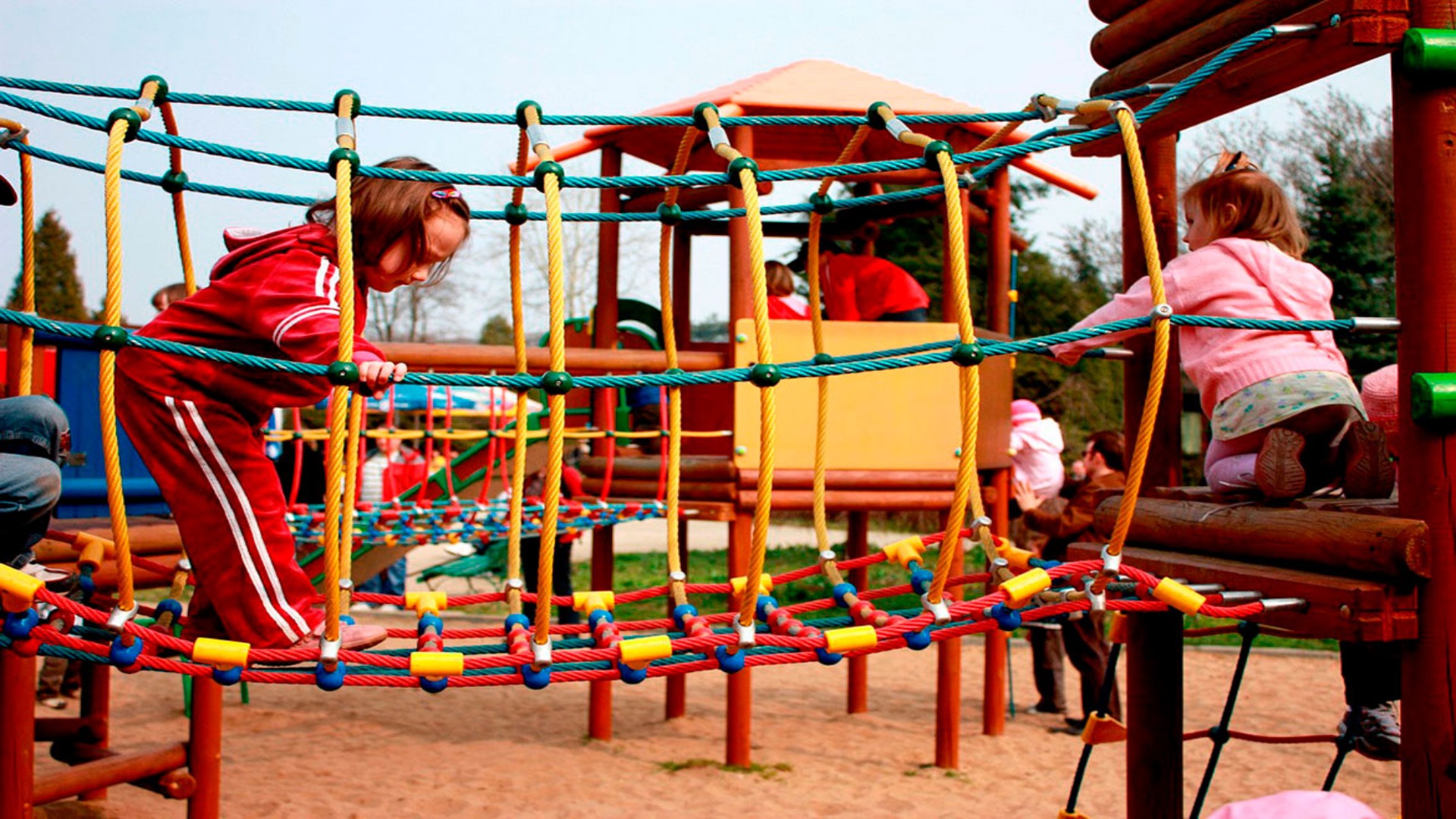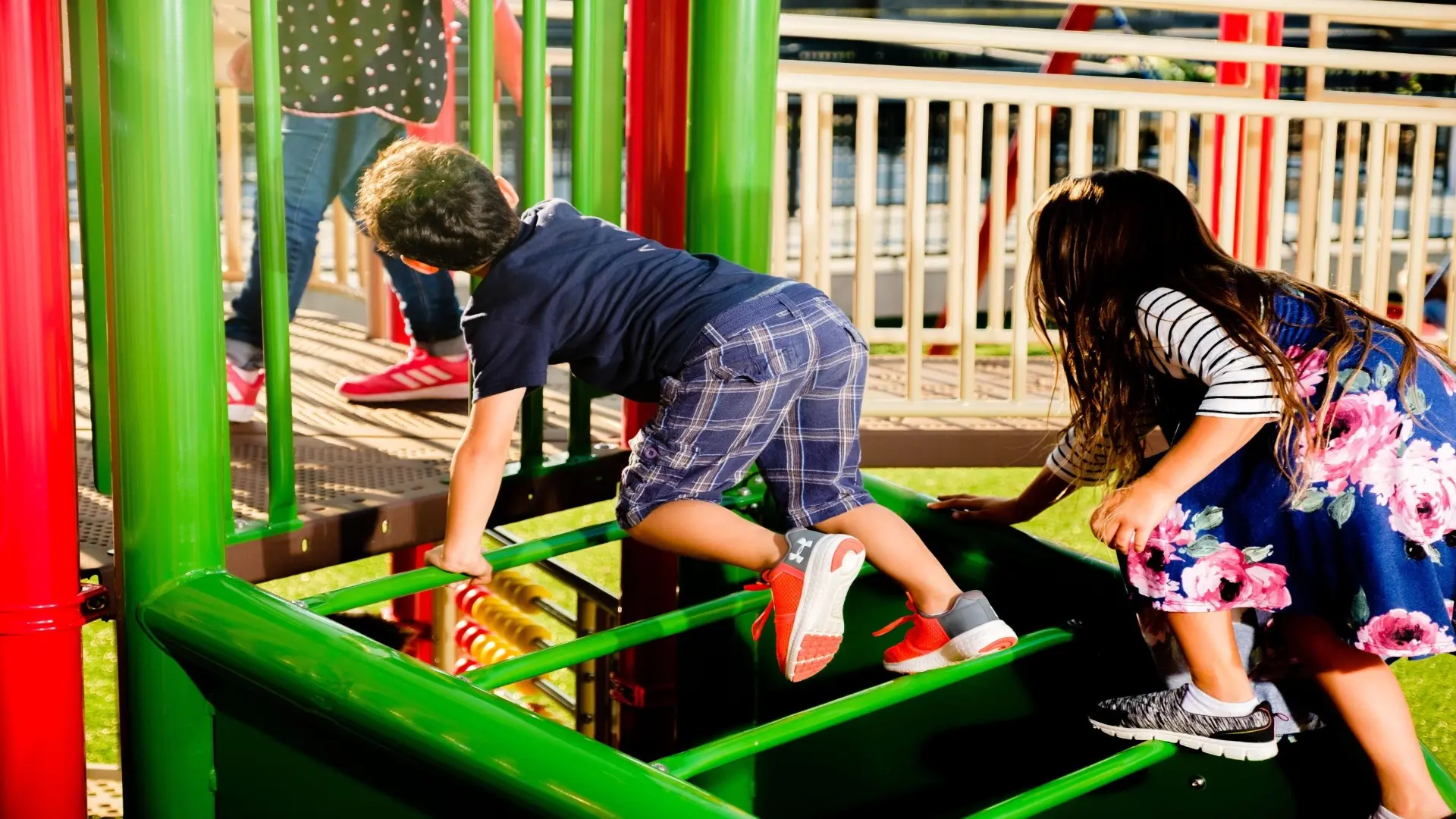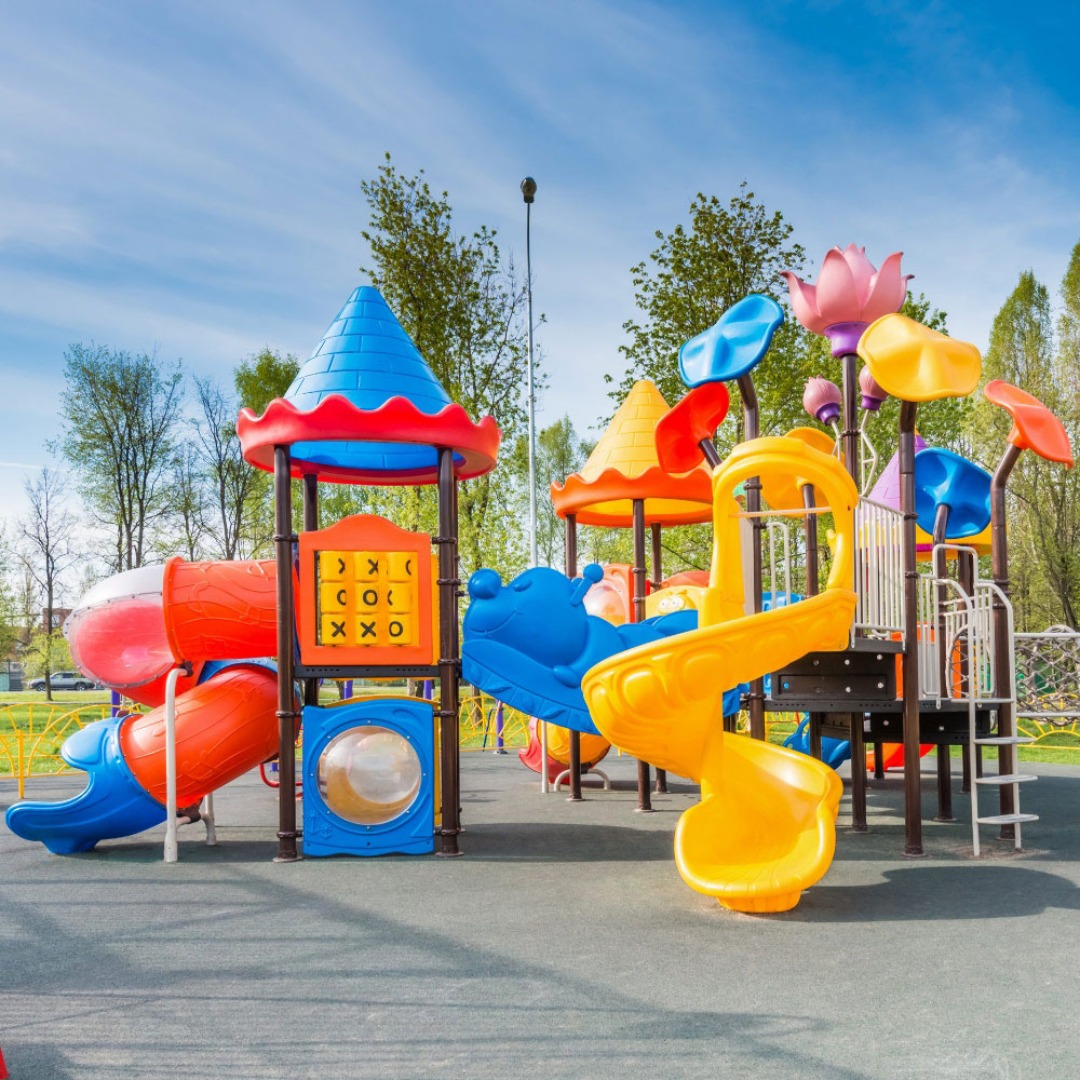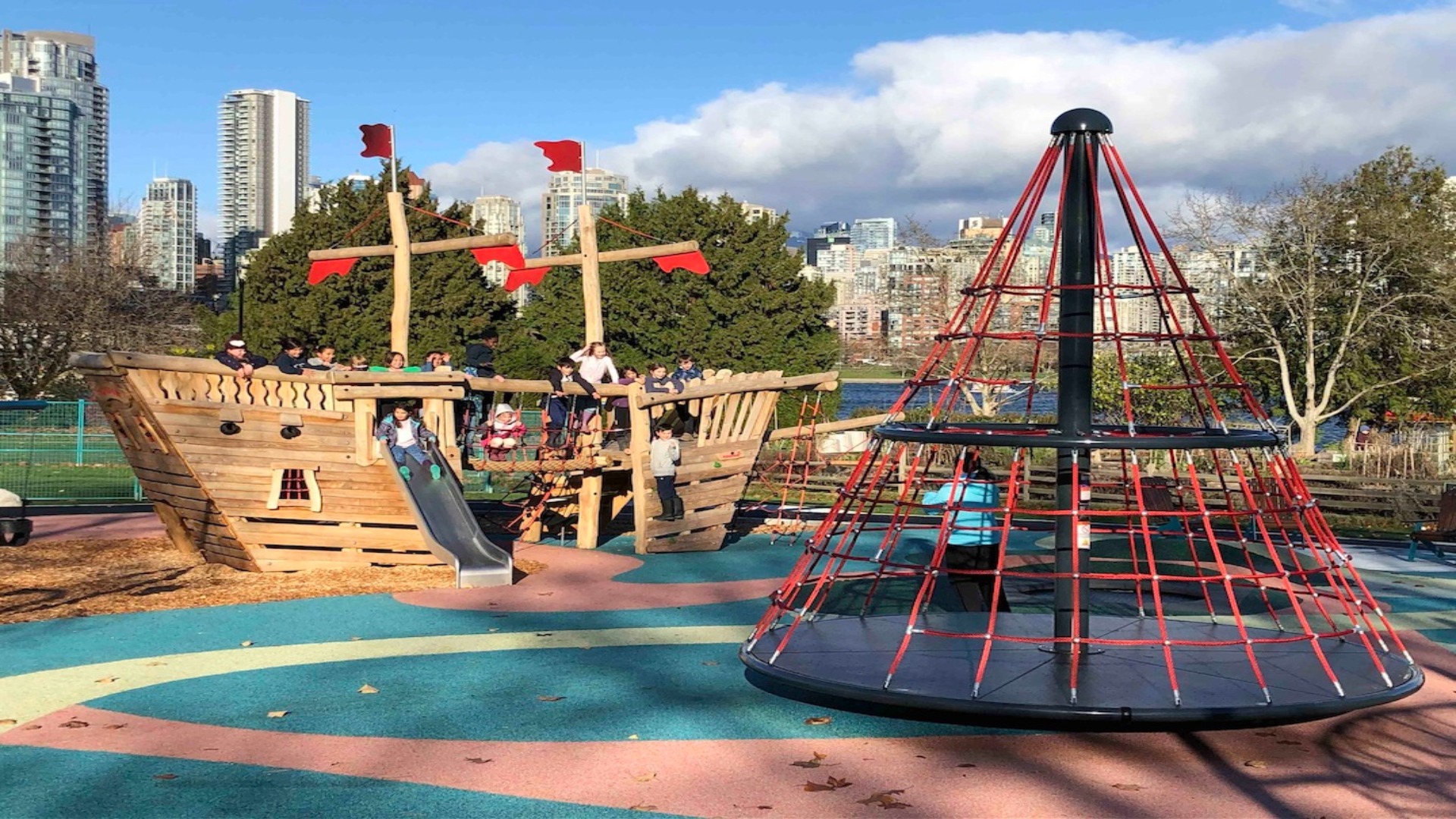Choosing a suitable playground for your childcare centre is an important decision that requires careful planning. The playground is an extension of your learning environment—it should provide safe, engaging play opportunities that stimulate children’s development.
With so many options on the market, how do you choose equipment and surfaces that best suit your program’s needs? This guide will walk you through the key factors to consider when selecting a new playground.
We’ll cover space assessments, safety standards, age-appropriate playground equipment features, maintenance concerns, creativity in design, and getting input from teachers and students. Following these recommendations will help you make a playground investment that delivers years of fun, exploration and growth for the children in your care.
1. Consider Your Available Space
When measuring your space, consider any local regulations on required fall zones. These dictate the amount of space needed when selecting age-appropriate equipment to minimise injury risks in case of falls.
Think vertically as well. Taller structures need higher clearance from trees or overhead wires. Secure any overhead spaces that could be accessed by climbing. The flow of use is also essential. Will younger and older kids intermingle, or do you need separate modules? Consider the ease of adult supervision from all angles.
 If space is tight, get creative. Multilevel wooden play panels can offer exploratory fun in a compact footprint. Modular tile systems allow customisation into nooks. Ground markings can optimise limited areas by dividing them for activities. Chalk hopscotch encourages physical play in small patches.
If space is tight, get creative. Multilevel wooden play panels can offer exploratory fun in a compact footprint. Modular tile systems allow customisation into nooks. Ground markings can optimise limited areas by dividing them for activities. Chalk hopscotch encourages physical play in small patches.
Don’t forget to account for storage. Look for playground sets with built-in bins for toys or that fold up neatly when not in use. This maintains tidy sightlines. With careful measurements and design, even a tiny yard can accommodate engaging outdoor play and learning. Focus on efficient usage of vertical and horizontal dimensions.
2. Assess Safety Standards
All playground equipment and surfacing must meet AS 4685 children’s product standards—these set guidelines to reduce potential hazards. Carefully review certification listings for any equipment under consideration. Make sure all components comply with the latest safety updates. Impact-absorbing surfaces are a must under structures over 24 inches tall. Materials like wood chips and mulch and poured-in-place rubber or engineered wood fibre do not protect from falls.
Inspect for accessible hazardous moving parts that could pinch or cut. Ensure protective barriers and guardrails block entrapment risks. Beware of protruding bolts, spaces that could trap heads or limbs, or splintered wood. Check regularly for damage or loose nuts or bolts as part of maintenance.
Ensure protective fall surfacing extends at least 6 feet in all directions from equipment or as mandated by regulations. Rake periodically to maintain proper depths. You can also include informative signs that share playground rules or fun signs that encourage pretend play, such as traffic signals on bike paths.
Enforce rules for equipment use, like no climbing on railings or pushing. Consider age limits for high-impact activities like monkey bars. Stay up to date on recall notices. Register warranted products with manufacturers to notify them of safety issues.
3. Choose Age-Appropriate Equipment
Consider the developmental stages of children in your program when selecting daycare playground equipment features. Different age groups have unique play needs. For toddlers, prioritise simple, open-ended playthings that promote large motor skills. Sand or water zones, sturdy pushing or pulling toys, ride-ons and soft climbers work well.
Preschoolers are developing balance, strength and cooperation. Include slides, low climbing walls, swings and sensory panels. Look for props that inspire pretend play, too. Older preschoolers or elementary school kids are ready for more challenging climbing playground structures. Monkeys, bars, multiple platform climbers and enclosures ignite curiosity and build confidence safely.
 For school-agers, incorporate zip lines, spinning features and things that allow inventive games. Closely sized equipment invites group play and social skills. Mix creative additions, like stepping pods, balance beams, and play panels. Texture, sound and material variety stimulate the senses.
For school-agers, incorporate zip lines, spinning features and things that allow inventive games. Closely sized equipment invites group play and social skills. Mix creative additions, like stepping pods, balance beams, and play panels. Texture, sound and material variety stimulate the senses.
Don’t forget about busybodies – include open grassy areas. Cushioned tumbling mats or playhouses provide another outlet for boundless energy. Well-rounded playgrounds provide learning opportunities appropriate to each developmental stage through interactive recreation.
4. Factor in Maintenance Needs
Ease of upkeep should factor into your playground choice. Lower maintenance translates to more time for play versus repairs. Wood requires frequent sealing or staining to prevent rotting. It also splinters more easily than composite or plastic.
Rust-resistant galvanised steel resists corrosion without frequent painting compared to standard steel. Stainless is the most durable metal option. Poured rubber surfacing is tough and seamless but more costly than wood chips or mulch. It lasts 15-20 years versus 5-7 years respectively. Movable or modular equipment allows for repairs without dismantling entire structures. Look for easy-access panels. Avoid fabrics that quickly degrade from UV exposure and moisture. Plastic, enamel or powder-coated finishes last longer.
 Lubricate moving parts regularly as directed. Promptly address squeaks or stiffness to prevent breakdowns. Inspect for graffiti, litter or pet waste that could spread disease if not cleaned promptly. Pressure wash annually.
Lubricate moving parts regularly as directed. Promptly address squeaks or stiffness to prevent breakdowns. Inspect for graffiti, litter or pet waste that could spread disease if not cleaned promptly. Pressure wash annually.
Consider warranties and known issues with specific product lines. Customer service and part availability have long-term implications. Low-fuss materials, sufficient buffers, and preventative care keep play spaces operating smoothly. This is the time to start researching and selecting the best playground equipment for your needs. The most important decision when choosing playground equipment is the material.
5. Consider Creative, Engaging Play
When choosing playground features, prioritise pieces that encourage imagining, problem-solving, and collaborative interactions. This type of play drives development. Look for open-ended props and structures without a single intended purpose. Logs, huts, panels, and toy storage encourage socio-dramatic pretend play.
Balance commercial, realistic toys with natural elements like loose parts like acorns, leaves and sticks. Let imagination run wild with these open resources. Include movable or building components like wooden blocks. Sensory experiences boost cognitive functions and calm behaviour.
 Climbing equipment features multiple routes and hiding spots to spark adventure, investigations, and peer negotiations. Water or sand areas inspire scientific thinking through pour-or-fill concepts. Add funnels, buckets, or vehicles for even more explorations.
Climbing equipment features multiple routes and hiding spots to spark adventure, investigations, and peer negotiations. Water or sand areas inspire scientific thinking through pour-or-fill concepts. Add funnels, buckets, or vehicles for even more explorations.
Swings are simple yet engaging. Various types, from belts to buckets, activate gross and fine motor skills. Incorporate natural terrain shifts using hills, steps or berms. The challenge encourages developmental strides for the intended age group.
Don’t neglect quiet spaces. Dense mini-trees, reading nooks and instruments offer recharge time amid active fun. Mix up engaging play that exercises the whole child – body, heart and mind.
6. Get Input From Students and Teachers
Consulting the primary users of the right playground equipment is vital in selecting pieces that enhance your program. Hold a meeting or distribute a simple survey to gather perspectives from the children. What are their favourite activities now? What else would they like to see?
Take notes on popular spots with lines and lesser-used areas needing renovations. Ask the teaching staff for insights. Which pieces best complement curriculum goals? How could the layout improve supervision?
Solicit feedback at different times, like after recess on high-energy days versus more sedate mornings. Activity preferences may vary. Consider challenges like waiting turns, sharing space or conflicts that new additions could help address.
Have teachers try out demo play equipment with students. Observe engagement levels and collaborative play that arises. Involve children in helper roles like facilitating polls, measuring spaces or recommending designs. This empowers buy-in.
While safety and standards drive final decisions, student and educator perspectives ensure maximum future participation that furthers learning. Their voices are invaluable throughout the process.
Your Kid’s Outdoor Exploration Starts Here
We hope this guide has provided some helpful considerations as you select a new playground for your childcare centre. Choosing equipment and surfaces optimising safety, fun, and development takes careful planning.
Following the recommendations around space, standards, age-appropriate play equipment and features, and maintenance can help you make a wise investment. Most importantly, gathering input from the children and teachers who will spend their days enjoying the playground will help ensure it becomes a beloved extension of your learning environment.
For years, Aaron’s Outdoor has partnered with childcare facilities nationwide to create playgrounds tailored to each program’s unique needs and budget. Whether you need a full-scale overhaul or a minor refresh, our team of experts can help bring creative play ideas to life.
Connect with us today to discuss your desires and schedule a free consultation. We’re ready to help design the perfect outdoor space for multiple kids in your care.





